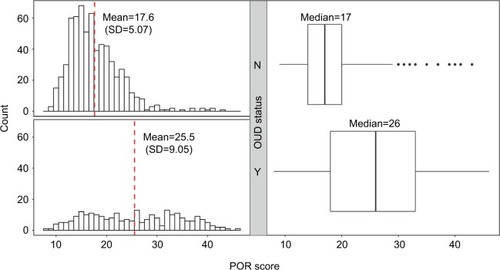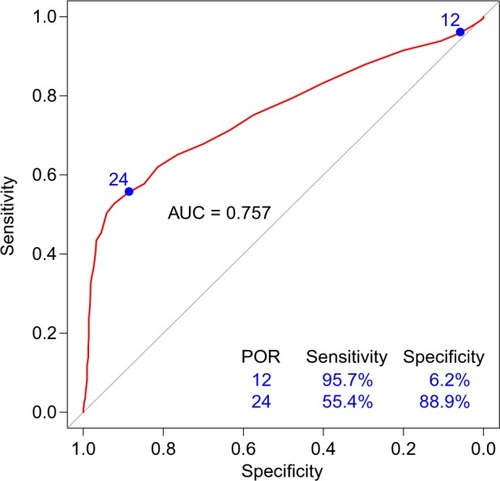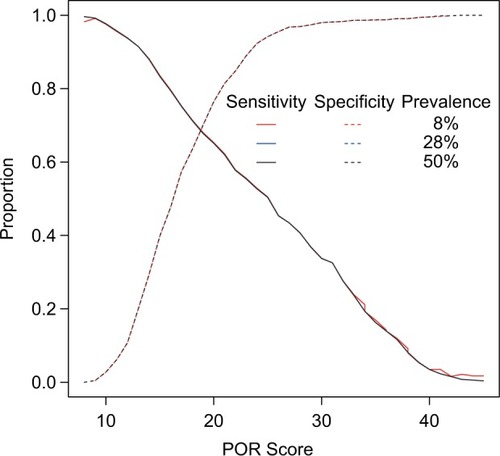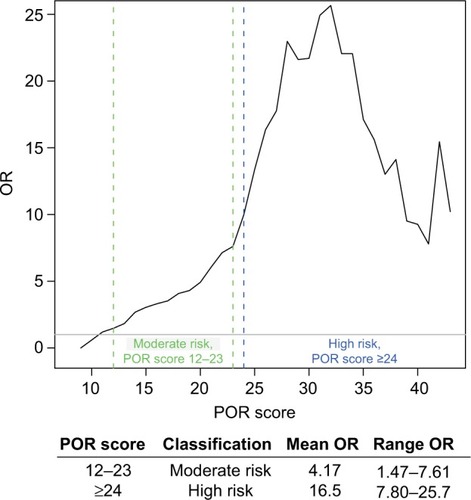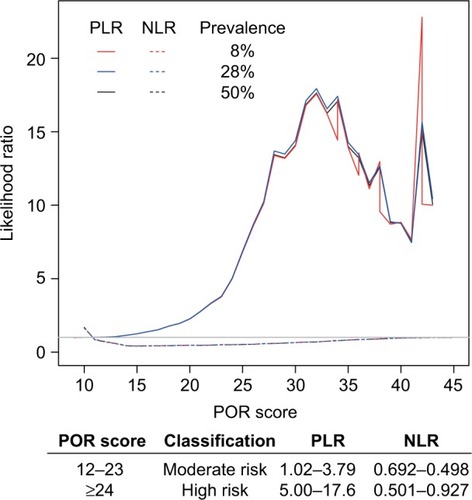Figures & data
Table 1 Patient demographics
Table 2 Proove Opioid Risk test panel markers
Table S1 Sensitivities and specificities of the POR algorithm using different cutoffs of POR scores to predict OUD
